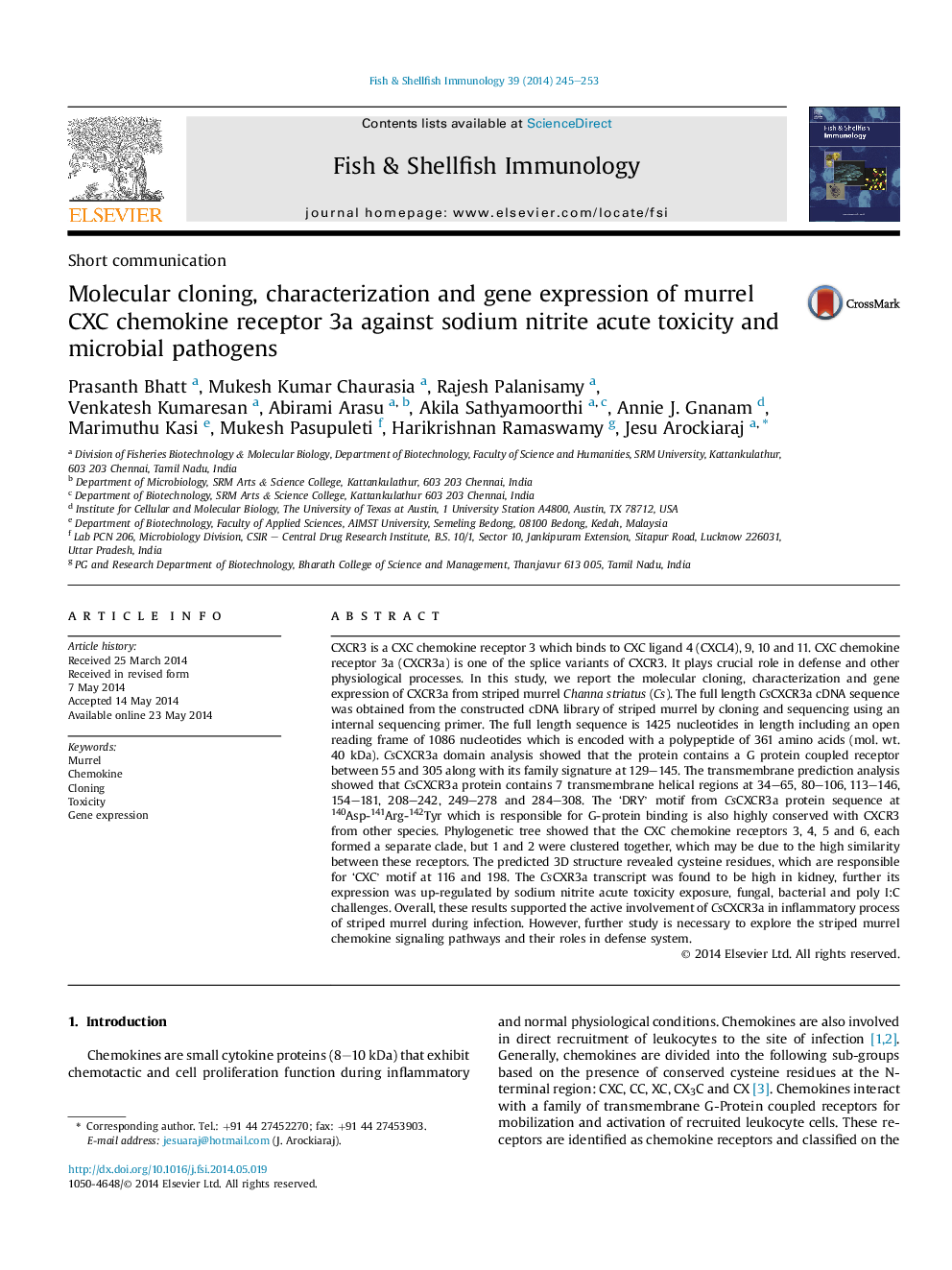| کد مقاله | کد نشریه | سال انتشار | مقاله انگلیسی | نسخه تمام متن |
|---|---|---|---|---|
| 2431617 | 1106764 | 2014 | 9 صفحه PDF | دانلود رایگان |

• CsCXC3a obtained from murrel cDNA library by internal sequencing.
• CsCXCR3a contains a G protein coupled receptor at 55–305.
• CsCXC3a contains 7 transmembrane α-helical regions.
• The ‘DRY’ motif of CsCXCR3a which is highly conserved.
• mRNA expression was inducted by nitrite acute toxicity and microbial pathogens.
CXCR3 is a CXC chemokine receptor 3 which binds to CXC ligand 4 (CXCL4), 9, 10 and 11. CXC chemokine receptor 3a (CXCR3a) is one of the splice variants of CXCR3. It plays crucial role in defense and other physiological processes. In this study, we report the molecular cloning, characterization and gene expression of CXCR3a from striped murrel Channa striatus (Cs). The full length CsCXCR3a cDNA sequence was obtained from the constructed cDNA library of striped murrel by cloning and sequencing using an internal sequencing primer. The full length sequence is 1425 nucleotides in length including an open reading frame of 1086 nucleotides which is encoded with a polypeptide of 361 amino acids (mol. wt. 40 kDa). CsCXCR3a domain analysis showed that the protein contains a G protein coupled receptor between 55 and 305 along with its family signature at 129–145. The transmembrane prediction analysis showed that CsCXCR3a protein contains 7 transmembrane helical regions at 34–65, 80–106, 113–146, 154–181, 208–242, 249–278 and 284–308. The ‘DRY’ motif from CsCXCR3a protein sequence at 140Asp-141Arg-142Tyr which is responsible for G-protein binding is also highly conserved with CXCR3 from other species. Phylogenetic tree showed that the CXC chemokine receptors 3, 4, 5 and 6, each formed a separate clade, but 1 and 2 were clustered together, which may be due to the high similarity between these receptors. The predicted 3D structure revealed cysteine residues, which are responsible for ‘CXC’ motif at 116 and 198. The CsCXR3a transcript was found to be high in kidney, further its expression was up-regulated by sodium nitrite acute toxicity exposure, fungal, bacterial and poly I:C challenges. Overall, these results supported the active involvement of CsCXCR3a in inflammatory process of striped murrel during infection. However, further study is necessary to explore the striped murrel chemokine signaling pathways and their roles in defense system.
Journal: Fish & Shellfish Immunology - Volume 39, Issue 2, August 2014, Pages 245–253